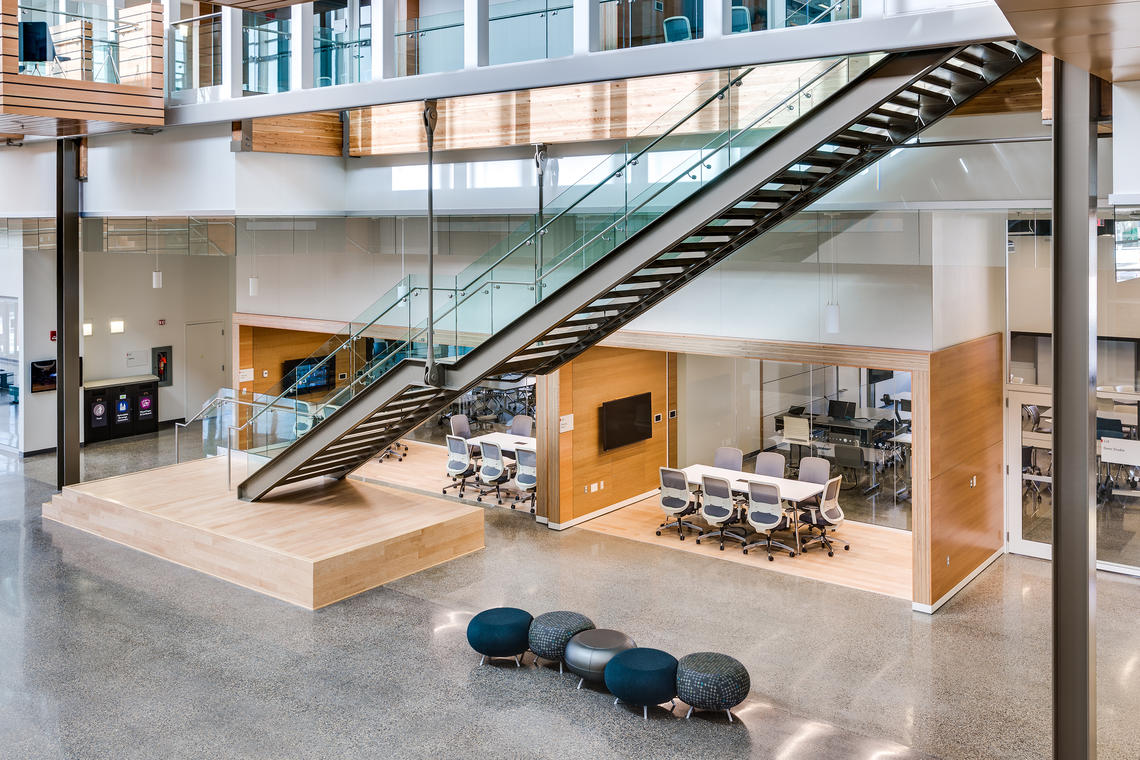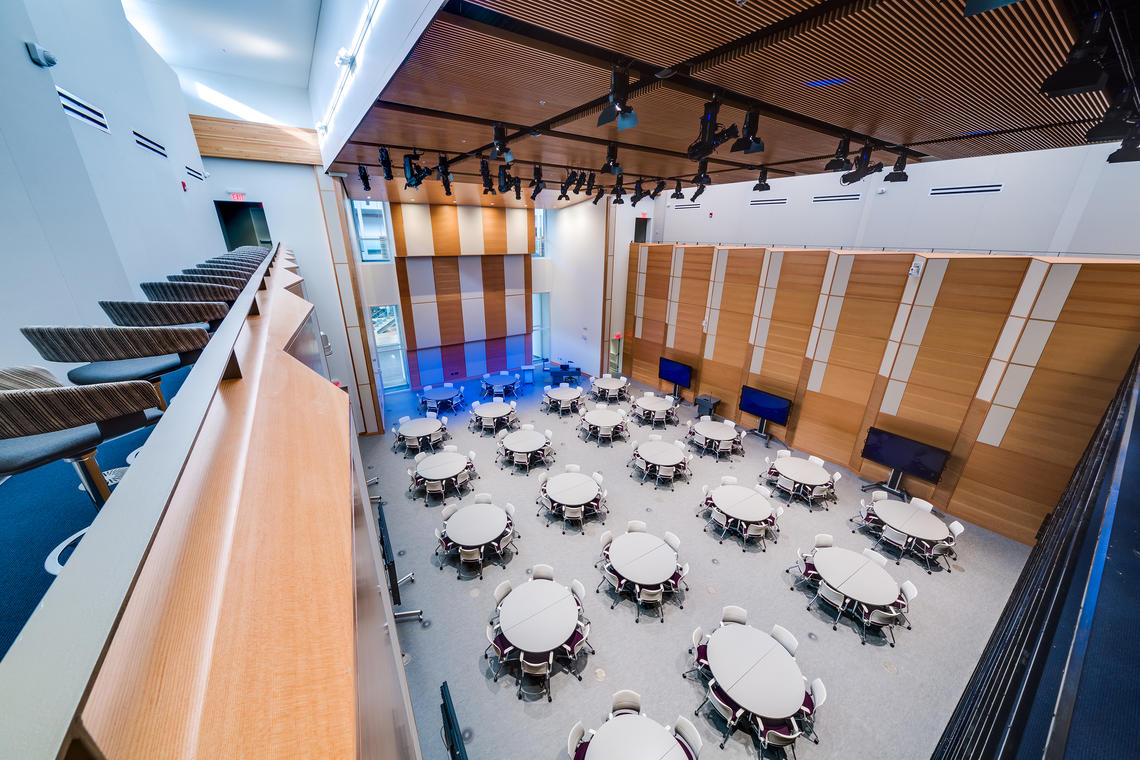April 19, 2016
University of Calgary opens the Taylor Institute for Teaching and Learning

Don and Ruth Taylor, Minister of Advanced Education Marlin Schmidt, and President Elizabeth Cannon.
Riley Brandt, University of Calgary
A red carpet, a red ribbon, and plenty of big smiles welcomed guests to the official opening of the Taylor Institute for Teaching and Learning on Monday. About 200 guests — community partners, philanthropists, students, faculty, and staff — gathered to celebrate the new building. The launch of the Taylor Institute also serves as an anchor to 50th Anniversary year celebrations at the University of Calgary.
“This is a truly transformational day for our university and our community,” said President Elizabeth Cannon. “We are extremely grateful to Don and Ruth Taylor and their family for the tremendous support to our students, our faculty and our university.”
After the giant red ribbon was cut by Don and Ruth Taylor, Cannon, and Minister of Advanced Education Marlin Schmidt, all of the guests filed into the Forum, a 370-seat theatre, for its first-ever event. The Taylors sat in the front row as a series of speakers thanked them for the Taylor Family Foundation’s $40-million gift that created the building. The Taylor Institute for Teaching and Learning is the only gift in the history of the University of Calgary to fund an entire building.

The $40-million gift is the only donation in the university's history to fund an entire building.
David S. Troyer
Enhancing the learning process for future generations
Kainai cultural and spiritual leader Randy Bottle gave a moving blessing to open the proceedings and wish that “young people who come here will take something home with them.” The emcee, third-year student engineering student Laura Fader, shared her passion for learning.
“The possibilities are endless when it comes to transformative education practices,” Cannon said in her remarks. “With a wealth of new hands-on learning experiences available to students both on and off campus, the Taylor Institute for Teaching and Learning will shine a light on teaching excellence, and serve as a touchstone for improvements across the country and around the world.”
Canada’s Governor General, David Johnson, sent a video message congratulating the university for the Taylor Institute, which he called, “the brilliant answer to an important question — who teaches the teachers?”
“What a fantastic addition to Alberta’s university community,” said Schmidt, Alberta’s minister of advanced education. “The building is a visionary teaching and learning hub that will advance accessible education for students for years to come.”

The building's design allows for walls, furniture, and technologies to be reconfigured.
David S. Troyer
Transparency, flexibility, and collaboration
Mayor Naheed Nenshi sent a video saying, “We need the best brains in the world to come here. Getting teaching and learning right is one of the most important things the university can do.”
After the accolades, Don Taylor said he and his family are happy to support improving teaching skills at the university level. “We’re excited about what lies ahead when it comes to teaching and learning,” he said.
What is learned in the Taylor Institute will help transform teaching through the integration of teaching practices, learning technologies and optimal designs for learning spaces. The institute brings together undergraduate students from a variety of faculties to collaborate on social issues, conduct research, and develop problem solving and critical thinking skills key to their future career success.
The building is designed by Gibbs Gage/Diamond Schmitt Architects and allows for the building’s walls, furniture and technologies to be reconfigured in countless ways — giving students and teachers numerous options for working in every space.
Now that the cranes and construction crews are gone, the doors to the Taylor Institute are wide open to foster transparency, flexibility, and collaboration in teaching and learning.

The building's design allows for walls, furniture, and technologies to be reconfigured.
David S. Troyer
